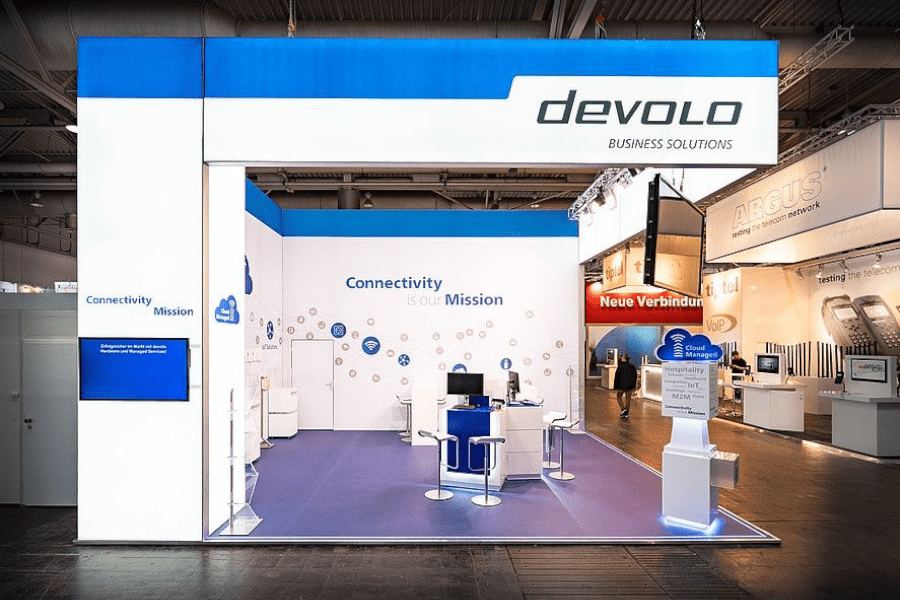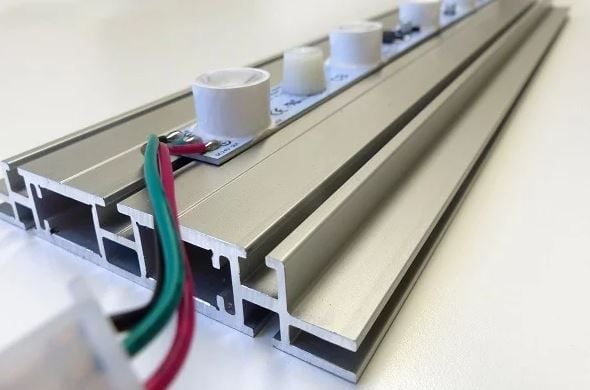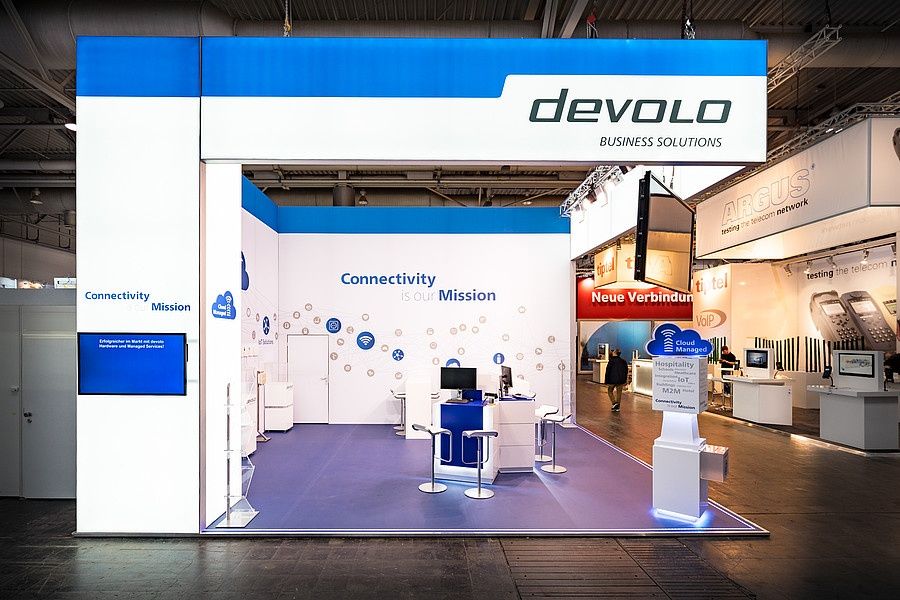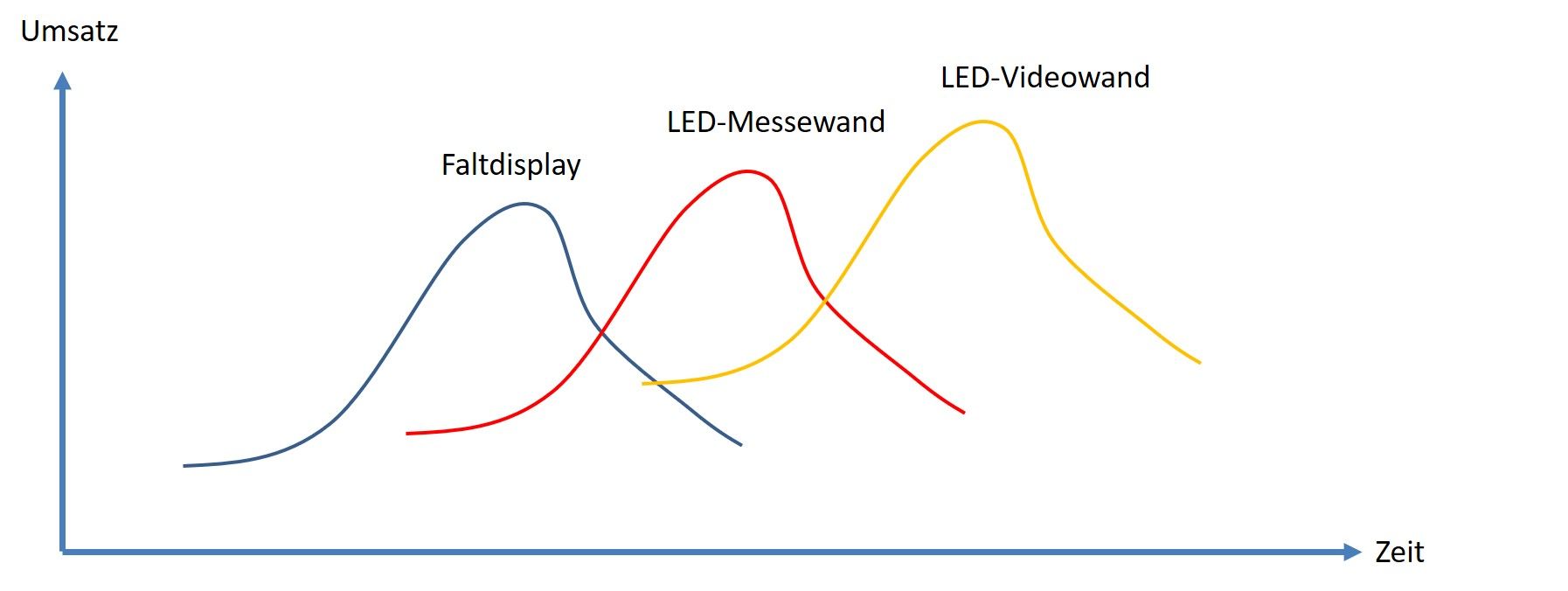From LED exhibition walls to modular video walls
In 2018, we published the blog post “Innovative exhibition systems - state of the art”, in which we assumed that classic LED exhibition walls would...
3 min read
 Dr. Christian Coppeneur-Guelz
:
Sunday, 10. November 2019
Dr. Christian Coppeneur-Guelz
:
Sunday, 10. November 2019

Especially in the area of trade fairs and events, it is very important to present your own company in a modern and innovative way. As with company buildings, potential customers always draw conclusions about the innovation and performance of the company itself from its external appearance. But what are currently innovative trade fair systems and what are not?
Attempts have always been made to increase efficiency in exhibition stand construction through modular and reusable structures (exhibition systems). In Germany in particular, numerous profiles and modular system kits have been developed for this purpose in order to be able to use them as modularly as possible. Compared to other countries (especially countries with lower labour costs), Germany has taken a special position here - for example, in many countries with low labour costs (India, Turkey, etc.), a great deal of conventional construction is still carried out using wood. In addition to the increase in efficiency, there is now also the aspect of sustainability, which has become increasingly important in recent years.
The trend towards foldable structures emerged in the 1980s - initially in the USA. This also fitted in perfectly with the US trade fair centres, which were mainly connected to hotels and were most comparable to German congresses. The exhibition stands in the USA were therefore not as large as in Germany and the logistical possibilities in the event centres were also not comparable with the infrastructure in Germany. In short, the exhibition systems had to be lightweight, easy to transport and, ideally, quick to set up.
During this period from 1980 to 2000, colour displays became virtually standard at many trade fair venues for stands of up to approx. 40 sqm. This development was further accelerated by the development of digital large-format printing in the 1990s, as the graphics could now be produced very easily.
However, there was also the technological development that led to the upswing in exhibition walls from 2000 onwards. Large-format digital printing was now able to produce large-format textiles based on thermal sublimation at low cost. These graphics were foldable and washable and could therefore be handled easily.
In fact, they ‘revitalised’ the classic exhibition walls that had previously been covered with rigid panel graphics. The textile graphics also enabled a key innovation:
While modular trade fair systems were previously usually illuminated by attached spotlights, it was possible to backlight the textile graphics from the rear and thus create an eye-catching display. While this was initially realised with bulky and defect-prone fluorescent tubes, new developments in LED technology now offer the possibility of integrating LED lamps into the frame and thus illuminating the graphics from the side.

In the period from 2000 to 2015, these LED exhibition walls were able to break the dominance of foldable structures (folding displays) and virtually became the standard at trade fairs. It was the intense glow of the graphics in particular that made the stands stand out enormously.

It will come as no surprise to anyone that it is once again technological developments that have led to a new change in exhibition systems. In this case, it is once again LED technology, but now not as a pure light source, but as an LED video wall. LED video walls usually consist of square LED modules measuring 50x50cm, which can be easily and modularly assembled to form entire walls.
The digital LED modules replace the previous graphics and in particular offer the possibility of displaying video content (i.e. moving images).
LED video walls therefore have key advantages over LED exhibition walls:
You can find a comprehensive article on the advantages of LED video walls here Advantages and disadvantages of LED video walls.
Due to these advantages, it is foreseeable that LED video walls will largely replace LED walls in the next 5 years. This effect depends on the cost development of the corresponding LED modules. Nevertheless, even if the costs fall, the purchase of such modules will be worthwhile for very few exhibitors - the rental of exhibition systems will become much more dominant.
At the same time, we must also expect that the production of large-format graphics will give way to the creation of digital content. You could say this is a classic effect of digitalization. However, this digitalization effect also offers key advantages from an ecological perspective:
You can find a further article on the decision to rent or buy an exhibition stand here: Buy or rent an exhibition stand.
As in every industry, there are product life cycles in exhibition stand construction. This article has looked in particular at the cycles of folding displays, LED exhibition walls and LED video walls.

While folding displays were replaced by modern LED exhibition walls around 2000, it is now LED video walls that are replacing LED exhibition walls thanks to innovative technologies and the resulting possibilities.
This development is analogous to other developments in digitalization with familiar effects:

In 2018, we published the blog post “Innovative exhibition systems - state of the art”, in which we assumed that classic LED exhibition walls would...

Update: 04.11.2022 The trade fair organizers have done a good job: The exhibition hall is full. Thousands of people found their way to this year's...

Even smaller exhibition stands can become real highlights with a well thought-out overall concept and innovative ideas. With a clear focus on design,...